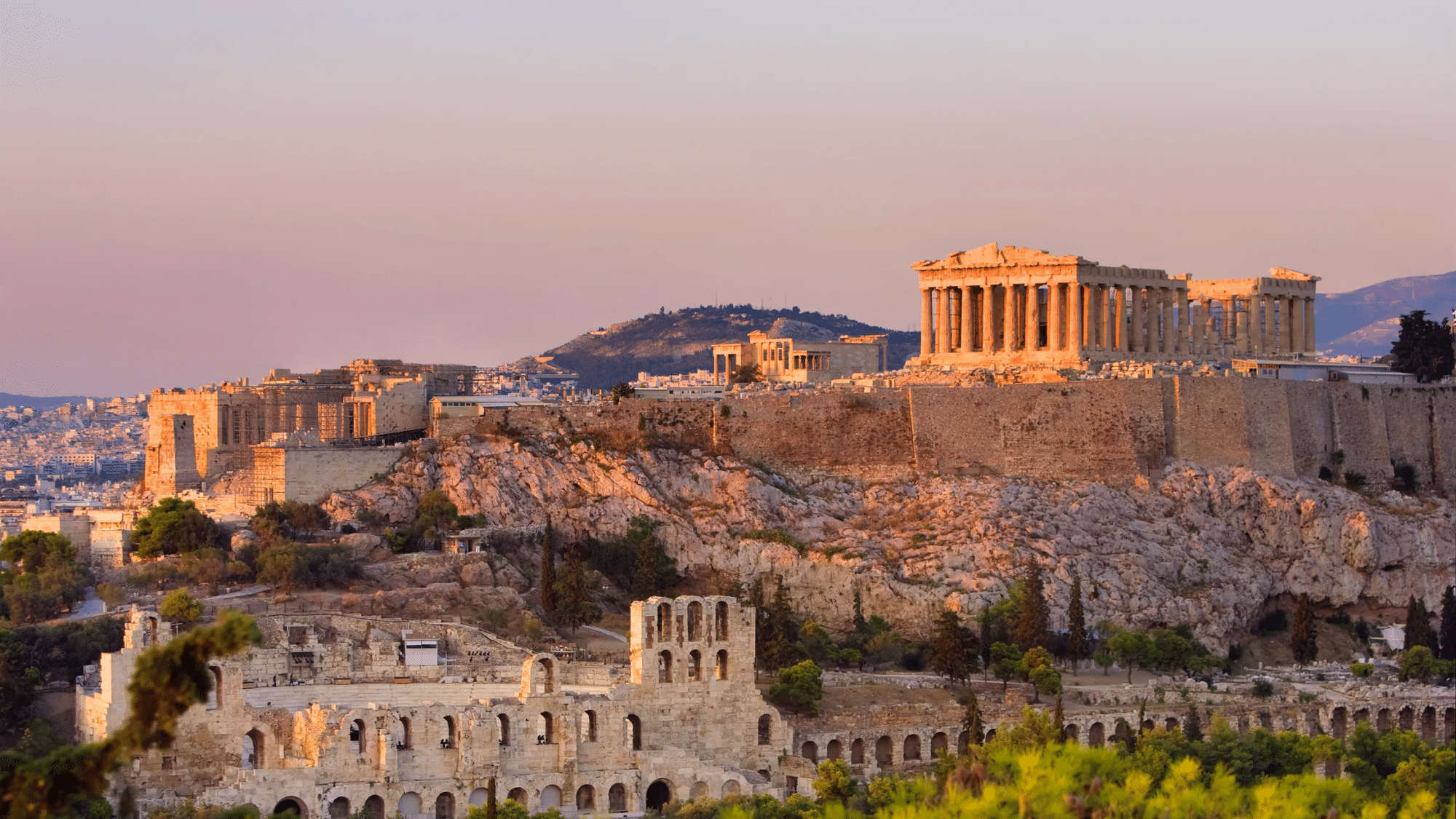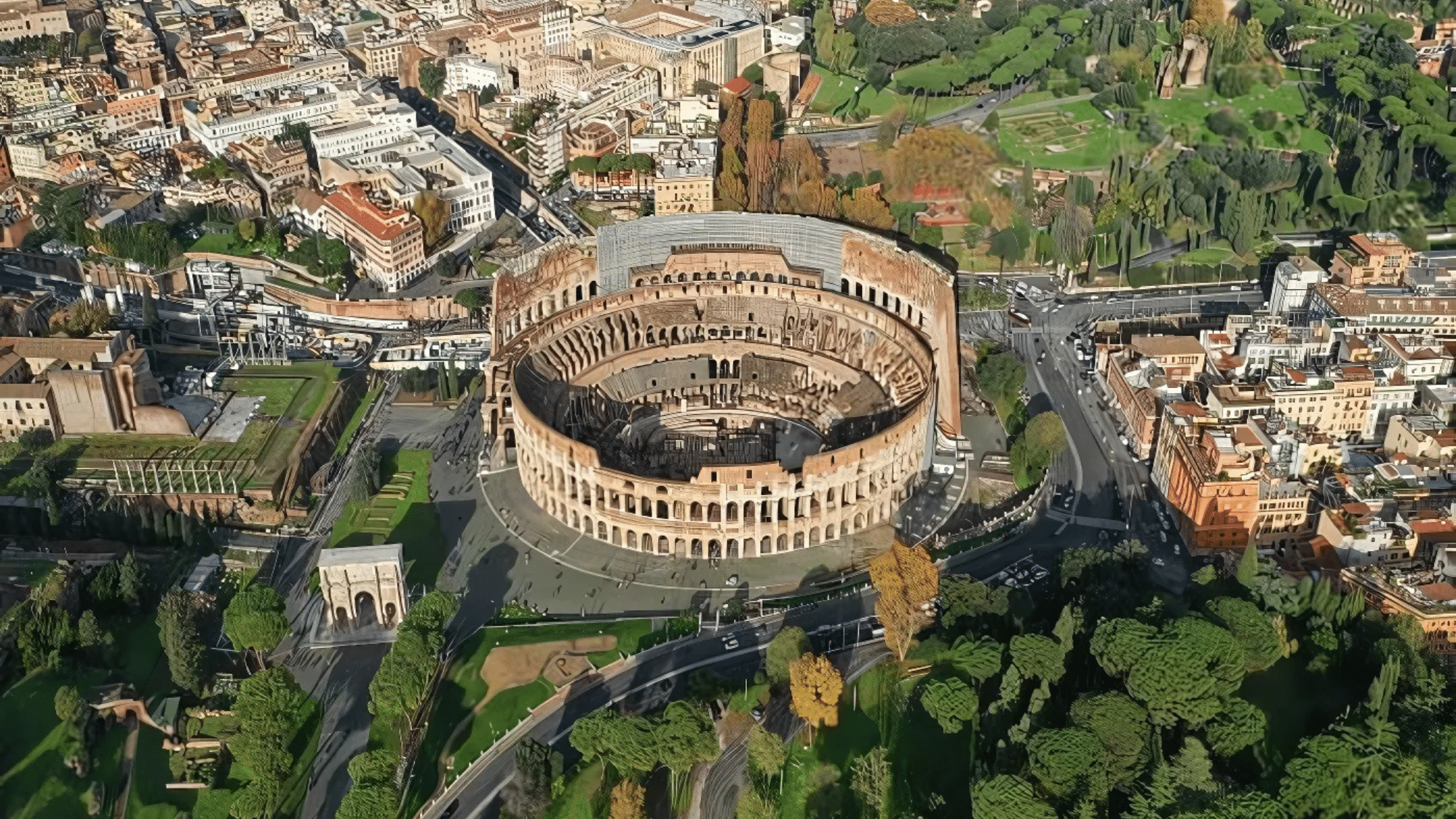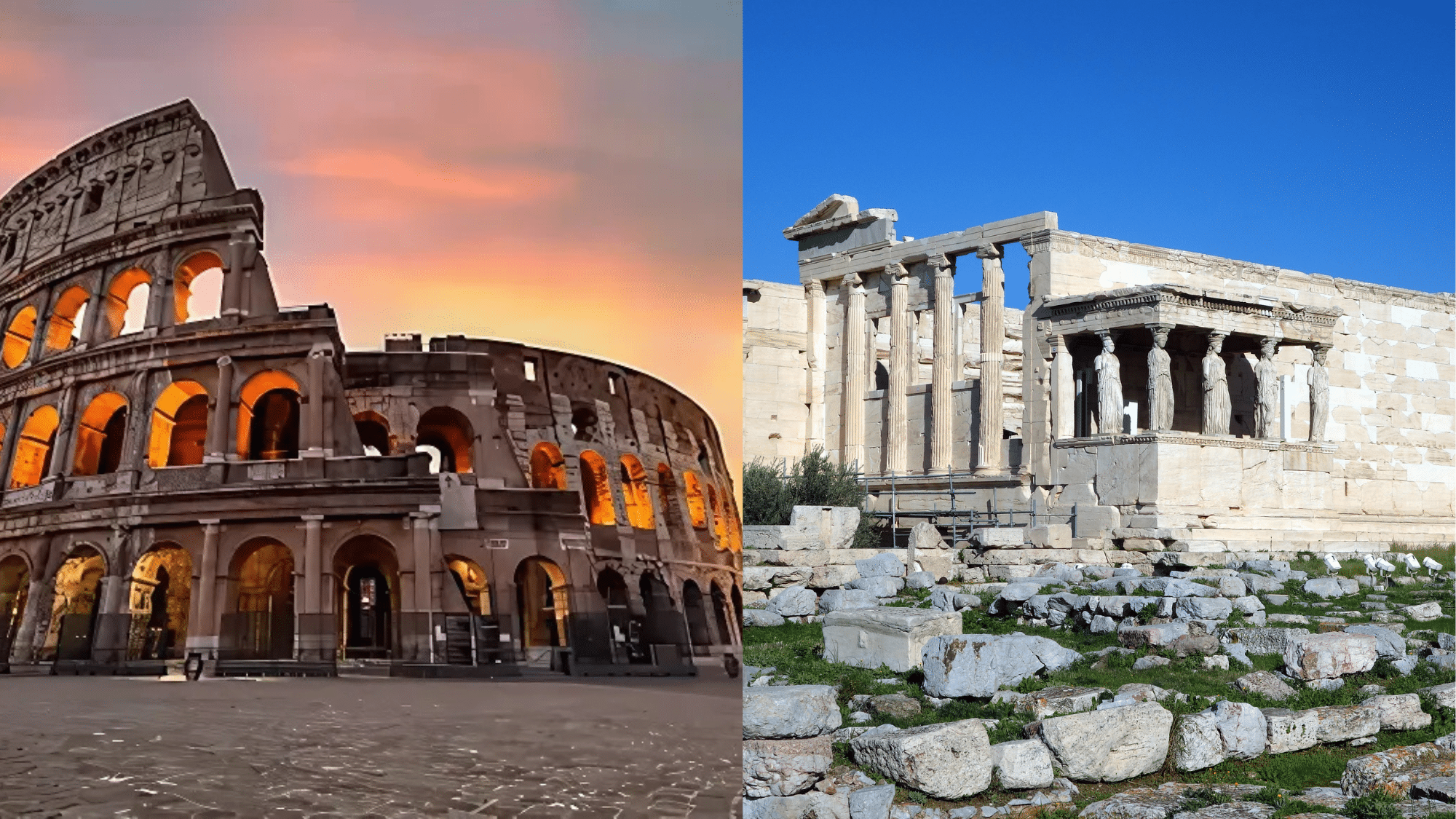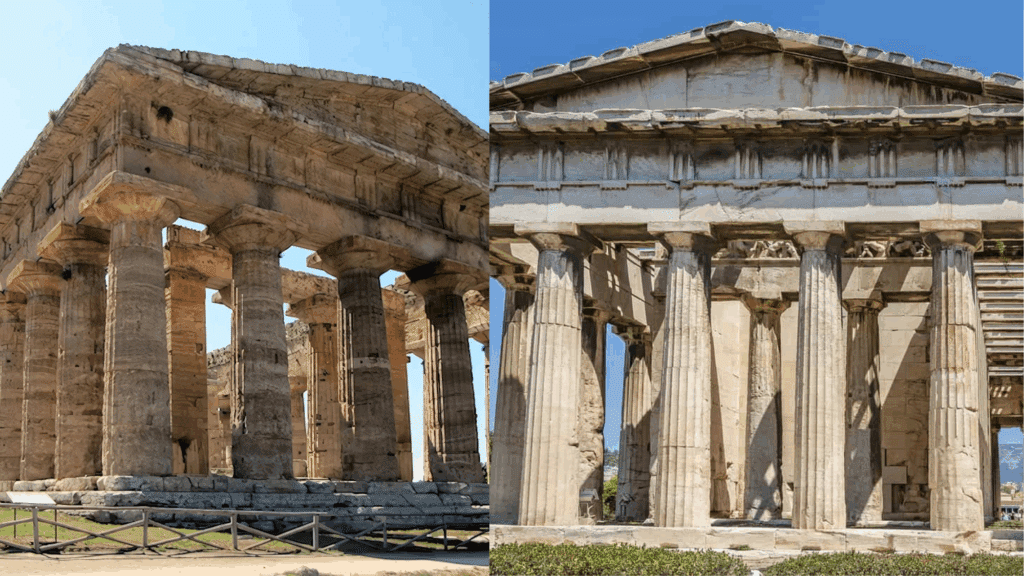Have you ever looked at old buildings and felt confused?
Many people mix up Roman and Greek styles all the time. It’s not your fault – those columns and fancy roofs can look pretty similar at first glance.
What’s worse, most websites just throw complex terms at you without clear examples.
This post will show you the key differences between these two famous building styles with easy-to-spot clues.
By the time you finish reading, you’ll spot the difference between Roman vs Greek architecture buildings faster than you can say “Parthenon.”
A Brief Study on Roman vs Greek Architecture
Roman vs Greek architecture shows that Greek buildings focused on beauty, balance, and honoring the gods with simple columns and straight lines.
In contrast, Roman architecture used arches, domes, and concrete to create larger, more complex public buildings for many purposes.
Greek Architecture

Greek architecture is known for its beauty, balance, and simple designs, especially in its temples built to honor the gods.
Greeks mostly used marble and limestone, and their buildings had straight lines and perfect symmetry.
They used a style called “post and lintel,” where columns held up flat roofs, and preferred Doric and Ionic columns, which are less fancy than Roman ones.
Greek buildings focused on the outside look, with less decoration inside, and were mainly built for religious purposes. Their style inspired many later buildings and is still admired for its harmony and proportion.
Roman Architecture

Roman architecture is famous for its grand and practical buildings, like amphitheaters, baths, and temples.
The Romans were experts at using concrete, which allowed them to build large arches, domes, and vaults that were not common in Greek buildings.
They loved to decorate their buildings inside and out, and often used the fancy Corinthian columns. Roman buildings were not just for religion- they were made for many uses, like sports, government, and daily life.
The use of arches and domes made Roman structures strong and able to cover big spaces, showing off their engineering skills.
Roman vs Greek Architecture: Key Differences in Design

Greek and Roman architecture share a common classical heritage but differ significantly in design and construction techniques. The table helps us understand their differences.
| Feature | Greek Architecture | Roman Architecture |
|---|---|---|
| Main Purpose | Built mainly for temples to honor the gods | Built for many things: temples, baths, theaters |
| Building Style | Simple, balanced, and focused on beauty | Big, grand, and practical with lots of details |
| Building Method | Used columns to hold up roofs (post and lintel) | Used arches, domes, and concrete for strength |
| Materials Used | Mostly marble and limestone | Used concrete, bricks, and stone |
| Columns | Three types: Doric (plain), Ionic (curly), Corinthian (fancy) | Liked Corinthian columns the most, added Tuscan and Composite styles |
| Building Shape | Mostly rectangular and symmetrical | Used circles and big open spaces too |
| Roof Design | Flat or gently sloped roofs | Steeper roofs and big domes |
| Decoration | Simple outside, less on the inside | Fancy both outside and inside |
| City Planning | Temples often stand alone | Buildings arranged together in cities |
| Famous Examples | Parthenon in Athens | Pantheon and Colosseum in Rome |
How to Identify Roman and Greek Architectural Styles
Learning how to identify Roman vs Greek architecture styles helps you understand the unique features that set these ancient designs apart.
By noticing differences in columns, building shapes, and materials, you can easily tell which style a building belongs to.
- Look for the types of columns: Greek buildings usually have simple Doric or scroll-shaped Ionic columns, while Roman buildings often use the fancier Corinthian columns and sometimes the plain Tuscan style.
- Check the building materials: Greeks mostly used marble and limestone, but Romans used concrete, bricks, and stone, allowing for bigger and more complex buildings.
- Notice the shapes: Greek architecture uses straight lines and rectangular shapes with flat roofs, while Roman architecture features arches, domes, and rounded forms.
- Examine the purpose: Greek buildings, like temples, were mainly for honoring gods and had simple, balanced designs, while Roman buildings included public spaces like amphitheaters, baths, and government buildings with more decoration inside and out.
- Look for arches and domes: If you see large arches, domes, or vaults, it’s likely Roman, since Greeks rarely used these features and preferred the “post and lintel” method with columns holding up flat roofs.
Legacy of Roman and Greek Architecture
The ideas from ancient Greek and Roman building styles continue to shape structures worldwide, particularly in Western nations.
Both cultures created buildings that blended beauty with strength and function, with the Greeks focusing on columns and perfect balance, while the Romans added arches, domes, and better building materials like concrete.
Their influence shows up in many styles such as Neoclassical and Federal designs, and can be seen in:
- Famous government buildings like the U.S. Capitol
- Banks and museums with grand columns
- Modern homes with balanced proportions
- Public spaces with domes and arches
Architecture schools still teach these ancient principles, and today’s builders often borrow from these designs.
This lasting impact proves that the smart techniques and artistic vision of these ancient societies continue to make our cities more beautiful and well-built thousands of years later.
The Bottom Line
So what makes Roman and Greek architecture truly matter today? Both styles have shaped how we build and design for thousands of years.
The key differences we discussed in Roman vs Greek architecture, from column styles to arches and domes, show how each culture solved building problems in its own way.
Next time you see a building with columns, look closer! Is it more like the simple, balanced Greek style or the practical, grand Roman design?
Try spotting these differences in local buildings, museums, or even government buildings in your town.


















